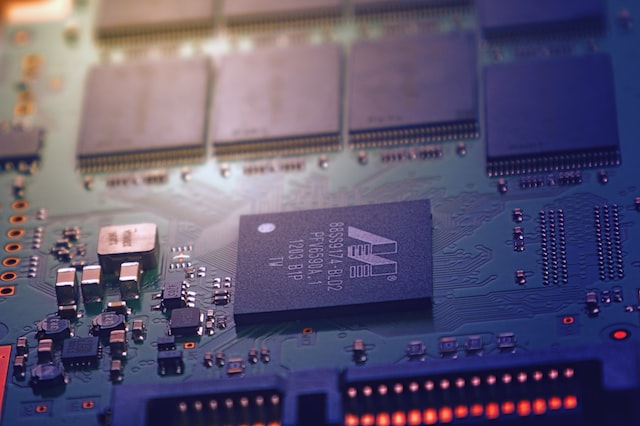What is Embedded Software? Top Uses and Examples of Embedded Software

You might have set the time in the washing machine and changed the temperature in your refrigerator to make them work as per your requirements. How could you do this all? Well it’s embedded software that helps us perform these functionalities and operate these devices with ease. Since they are embedded in a device, they are termed embedded software.
Today, tens of thousands of products contain embedded software systems as their use continues to rise. Growing at a CAGR of 6.5%, by 2031, the global embedded system market is expected to reach $163.2 billion.
The rising demand for ventilators and modern medical equipment due to the COVID-19 pandemic has boosted the embedded software market. Healthcare instruments such as imaging systems, glucose meters, microcontrollers, and others, are used in developing advanced ventilators and other medical equipment, boosting demand for embedded software.
Let’s dive into the details of “Embedded Software” and where it fits in the spectrum of Software. We also look at how we can build an embedded software and what are its various examples.
What is Embedded Software?
Embedded software is a program that runs on custom-built special-purpose hardware and is intended to perform a single well-defined task repeatedly.
Common software applications, we come across on a daily basis, such as devices ranging from electrical switchgear to building systems, and software embedded in factory machines are embedded software.
Simply put, embedded software is a one of type of software which aims to manage a specific hardware device to optimize its particular requirements and maximize its usefulness to the user. Technically, embedded software can be simple, taking up only a few kilobytes of memory, or highly complex, containing thousands of lines of code.
What Does Embedded Programming Mean?
Embedded programming is a subset of programming that involves the creation of consumer or business-facing devices. The concept of embedded programming is one of the driving forces behind the evolution of digital appliances and equipment in today’s IT markets.
Embedded programming can also be called embedded software development or embedded systems programming.
The primary distinction between desktop and embedded programming is in their intended use. Because general computers are used for various purposes, their software can be installed on multiple devices and easily reconfigured. On the other hand, embedded software serves a single purpose and is designed specifically for the device on which it is intended to run.
How To Build an Efficient Embedded System?
Proper embedded software must be written to meet customers’ needs and bring high-quality products to market. Here are the eight steps to creating efficient embedded system software.
1. Product concept and purpose
The embedded product may be required by the manufacturer or customers based on how they believe the larger product should function. Engineers will have to first think about how the embedded product might work and what benefits it might provide. They will also have to estimate how much the embedded product will cost customers or manufacturers.
2. Establish overall requirements
Engineers will determine everything the product requires to function correctly. They’ll consider questions like: What functions does the embedded software need to perform? What are the size, weight, and price restrictions? They will also have to consider the hardware the product will be installed in.
3. Write down detailed technical specifications.
Here, engineers create a document outlining the product’s technical specifications. These will include, among other things, the functions that the product must perform, environmental conditions in which the device is expected to work, and manufacturing requirements.
4. Determine whether the product requires a user display.
Some embedded software requires simple displays to inform users about their operation. Engineers want to know if a product needs a user display to evaluate its specifications. You may be required to create a graphical user interface.
5. Create a prototype
It’s a good idea to build a basic prototype to assess the hardware, identify necessary components, and see how they might work together.
6. Create the system architecture
Engineers create the overall architecture for the product during this step. They’ll discuss the following issues:
- How will the system be supplied with power?
- How is the product going to be linked to the internet?
- Will the operating system have to be embedded in the device?
7. Determine the operating system (OS), peripherals, and development platform to use
Engineers determine whether the product requires a real-time operating system, which is a system that processes input within a specific time frame, often exceptionally quickly. In that case, they will select the best real-time operating system for the product. If not, they can pick the best non-real-time operating system.
8. Create the final prototype
After designing the system’s architecture, engineers will proceed ahead to create a final prototype. This activity ensures that architectural design choices will work on the finished product.
Examples of Embedded Software
Today, embedded system applications can be found in almost every industry and sector.
Embedded software development is critical to the operation of interactive kiosks, medical devices, home appliances, cars, and other everyday items. For example, Athenahealth, a healthcare IT service provider has launched an embedded EHR telehealth tool for physicians, which has significantly streamlined their daily operations. It enables them to perform HIPAA-compliant telehealth visits more efficiently within practice workflows such as scheduling, patient messaging, invoicing, video conferencing, and concurrent-encounter documentation.
So, across sectors, there are numerous areas where embedded software systems are being leveraged, as we look at some examples where embedded software is used.
Printers
Embedded software in modern printers helps convert incoming data into instructions for applying ink to paper. They can also scan documents for storage or copying and communicate with other devices via various protocols (fax, Bluetooth, Wi-Fi, Ethernet, and USB).
IoT devices
In IoT ecosystems, multiple connected devices sense environmental or industrial parameters and capture data of diverse forms. Thanks to embedded software present in these devices.
Bluetooth speakers/earphones
The convenience that Bluetooth speakers/earphones offer to users is all due to embedded software, which enables the Bluetooth device to convert digital data to analog sound signals.
Automobiles
Forget self-driving cars; modern automobiles are almost entirely controlled by embedded software. Complex software manages many automotive components, including climate control, active suspension, power and energy management, and engine and transmission control.
Appliances
Embedded software controls modern devices such as dryers, clothes washers, refrigerators, microwaves, and K-cup coffeemakers. This software monitors operations to improve performance and reduce energy consumption.
The Future of Embedded Software
Embedded software will continue to find its way into more devices. As computing power and storage density improves, it will also grow in capability and sophistication. Let’s look at the embedded software trends for the coming decade.
- Artificial intelligence (AI) is a significant development in embedded software. Security video systems, for example, will soon be able to not only record a person approaching your property but also determine whether the person poses a threat. This can result in an early warning system or the activation of additional security measures.
- The rise of 5G, the Internet of Things (IoT), and edge computing will propel the industry forward.
- One noteworthy trend is that Python is rapidly gaining popularity among Embedded Systems Engineers and appears poised to take the lead in embedded programming for electronics over the next decade.
- With seemingly limitless potential applications, the automotive and medical markets are expected to be significant drivers of the embedded software industry. Still, there are few industries where embedded software is not already a factor but is gaining increasing traction. For example, we see embedded software becoming increasingly important in the marine technology sector as the transition to autonomous products, robotics, and AI accelerates.
Furthermore, embedded software systems can be highly customized. This is significant because it allows for new applications and innovation in other industries.
Summing Up
Embedded software can be found all around us. It will become more common, making our devices more innovative, capable, and valuable. If they haven’t already, embedded software devices will soon outnumber those running application software. In any case, it’s safe to say that software is no longer just for computers.
Creating and delivering a safe and secure embedded software system is a delicate balancing act that necessitates expertise and skill sets to meet competing criteria in a system with limited computing resources. Of course, not only is a fully operationally secure software system required, but so are its components, availability, and performance.
For a company with ambitions to be at the forefront of advanced manufacturing, embedded software is today’s critical new frontier. Contact us to learn more about our embedded software programming services, technologies, devices, client success stories, and tech partnerships.
FAQs
What is Embedded Software?
It is a code that runs on the hardware designed to perform a single well-defined duty repeatedly.
What is the difference between Embedded Software and Embedded Systems?
The hardware components within a device running embedded software are called an “embedded system.” At the same time, embedded software is developed from scratch to run exclusively on that hardware in that precise configuration.
What are the benefits of embedded application development?
- Embedded software is designed for small and particular tasks.
- Practical uses with various tasks in domestic, industrial, entertainment, communication, automobile, agricultural and medical domains.
- Faster to load.
- Simple to manage the general-use embedded devices.
What are embedded systems used for?
Home appliances, smartphones, and the heating and security systems that operate without interference in our homes use embedded system technology.
Is Finoit, a reliable performer of integration of embedded system software?
Finoit has a professional team of specialists – Business Analysts, project managers, frontend and backend developers, and QA specialists. We find a suitable and individual approach to every customer and lead the project to a successful launch.


